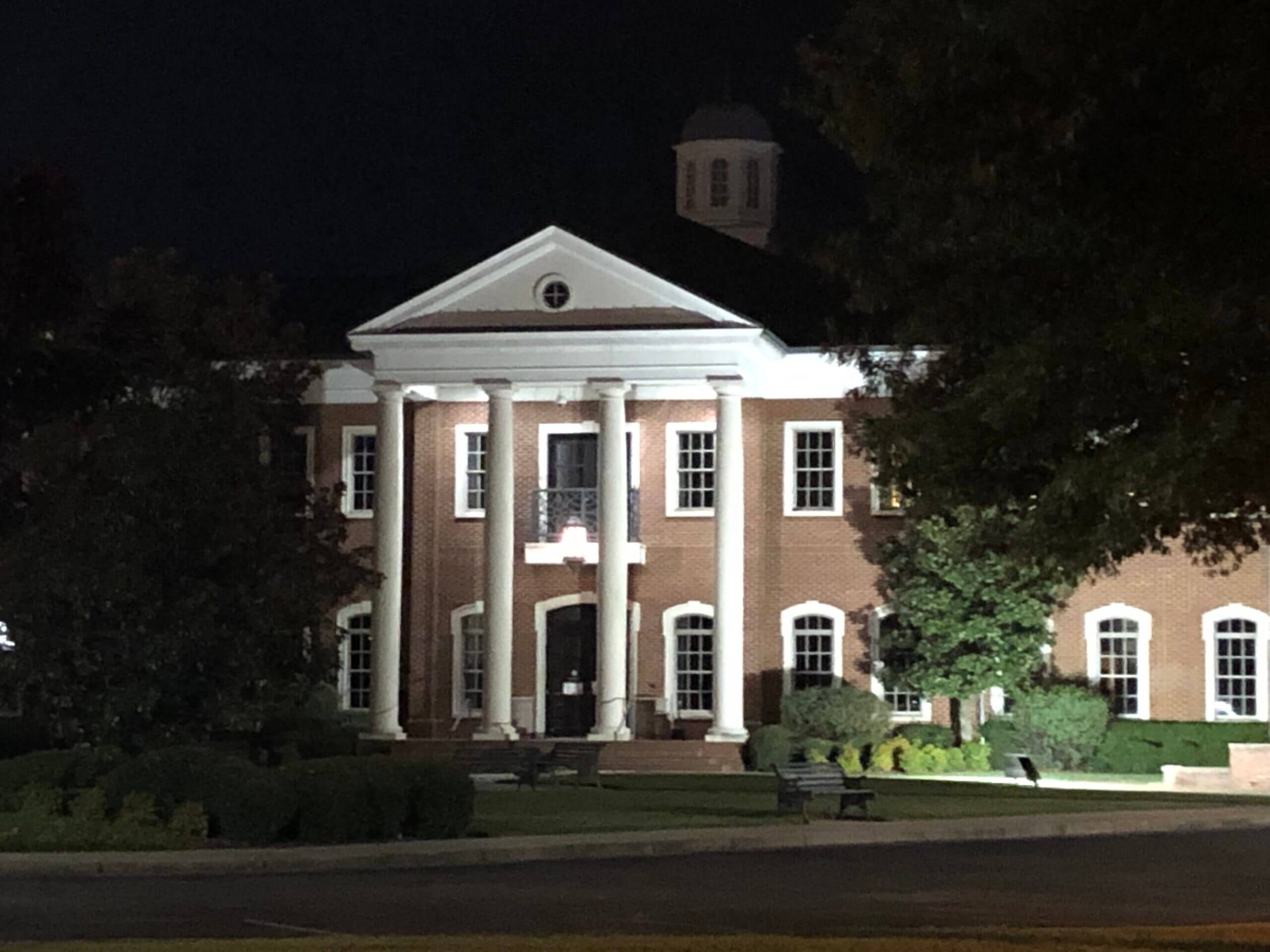DeSoto County PERS retirees discuss changes
Photo: From left, DeSoto County REPA President Jan Knight, DeSoto County Chancery Court Clerk Misty Heffner, Lee County Chancery Court Clerk Bill Benson (speaker), and former DeSoto County Supt. of Education Milton Kuykendall, who is also the District 2 Representative for REPA and the state’s 2nd Vice President who is in line to be state REPA President in four years. (Submitted photo)
By Patsy McCrory
An overflow crowd of DeSoto County retired educators, city employees, county government employees, and even college educator retirees attended a recent meeting of the DeSoto County Retired Education Personnel Association at One and Only Barbecue in Southaven.
DeSoto County REPA President Jan Knight welcomed everyone and recounted the years of hard work that have resulted in improved salaries and benefits. “We don’t want to lose any of what we have worked so hard to achieve,” she stated.
Lee County Chancery Court Clerk Bill Benson traveled from Tupelo to address the group about the status of the state’s Public Employees Retirement System. Benson is the longest serving PERS State Board member, serving since 2008 with his current term ending in 2027.
His first statement was that PERS is NOT in default. “We have $30 billion in assets,” he assured. “We just have to become proactive for the future. We are at the point where it is either more money or possibly fewer benefits for our current retirees.”
“Lt. Gov. Delbert Hosemann has told retiree groups that he doesn’t support changes for current and retired employees, and Tier 5 as proposed by the PERS Board only makes changes for new hires in the future,” Benson added.
According to Benson, there are 2,000 fewer employees who are not paying into the system compared to the past. “This past year we had 584 teacher positions left unfilled,” added former DeSoto County Supt. Of Education Milton Kuykendall in his introductory remarks. He is now serving as the REPA District 2 Representative and the Third Vice-President in line to be state president in four years.
Local REPA members held their annual Legislative Meet and Greet in August when there was intense discussion about the possibility of new hires in the future being given the option of paying into their own 401-K savings programs rather than into PERS. “That measure has totally been taken off the table for this year,” assured Rickie A. Vaughn, DeSoto County REPA Vice Pres. and State REPA Board Executive Secretary-Treasurer. “But we do expect other changes to keep PERS strong for the future. The State PERS Board has made its recommendations for this year’s changes, and the REPA Board voted to support their recommendations.
An actuary analyzes the financial costs and risk and uncertainty and uses mathematics, statistical, and financial theory to assess risks and to help clients develop possibilities to minimize the cost of the risk.
“Our actuary recommended a 5 percent increase in the employer cost. Currently the contribution rate is 17.4 percent, but it will be raised to 19.40 percent by July 1, 2024, and raised incrementally over the following two years. Lowering the investment expectations from 7.50 percent to 7 percent could cause an additional 5 percent increase, but that will be a decision to be made at a later date based upon many factors,” Benson explained.
“There has been discussion of freezing the Cost of Living Adjustment (COLA) check amounts for a time to save money for the fund. Recipients would get the same amount as the previous year, but they just would not get the compounded interest increase at the end of each year. There are several options being discussed,” he stated.

“People are living longer, and we have a $20 billion liability. The PERS Board can’t change anything but the employer’s contribution rate. We need to be proactive and not passive about ensuring PERS remains strong in the future,” he warned.
PERS provides retirements for not only state public school educators (at all levels, including colleges and universities) but also the state’s law enforcement and firefighters along with city, county, and state government employees.
Northwest Community College retiree Whitt Perry warned that legislative bills will be developed through late April. “Nothing is dead until the legislators come home after this session ends,” he also warned.
Malinda White, a current Tate County teacher who retired from DeSoto County, is worried that if the PERS Board pushes a 2 percent employer contribution rate by July 1, another 2 percent raise in July, 2025, and another 1-1.5 percent raise after that, “It will bankrupt Tate County,” she vehemently stated. “We are scratching to try to do improvements in our schools, but this will break us,” she continued.
“There is no win/win,” Benson replied. “It is going to cost money, or there is the possibility of cutting benefits in the future. A cash infusion from the Legislature could help.”
DeSoto County Schools retiree Teresa Gabbert asked if changes are made to PERS in the future, “will they apply to all groups in PERS such as firefighters, highway patrol, city, and county employees, and state legislators?”
Benson replied that some things will affect all retirees. “Under Tier 5 all PERS employees hired from a certain date would be affected. I don’t think we do a very good job promoting the benefits of PERS to everyone in the state, not only the direct recipients. Our system puts $3 billion per year into the state’s economy. Over 90 percent of it stays in the state. The average benefit paid out in COLA checks is $27,000. That generates lots of sales tax revenue and more income for our state,” he said.
“There is discussion of COLA amounts being paid in monthly payments rather than one lump sum at the end of the year. Current retirees could opt to use either method, but new hires may only be given this monthly payment option as the default,” he added.
“Colleges and universities have an Optional Retirement Program that was set up for certain ones of their employees to have portable retirements in case they leave to go to other states. We want to cap the employer contribution to their account at the current level,” stated Benson.
“Retirees who received the 1999 benefit changes retroactively are a significant portion of the unfunded liability. This levels out after the next fifteen years or so. As county hospitals are bought out by other entities, or other entities privatize and leave PERS, that affects our number of contributors and can leave their unfunded liabilities for the rest of the participants. PERS is not a standalone event. Things are constantly changing,” he explained.
He suggested that under Tier 5 when a new hire comes in at an age like 56, for example, then he probably would not get a COLA for a long time; but when the full-time lifelong teachers or other employees who make public service a career retire, they would likely be granted a COLA because PERS should be adequately funded by that time.
“The option of doing nothing is not an option at this point,” he concluded.
Malinda White warned attendees that she fears that legislators will wait until the last minute to bring up bills out of their secret meetings without much time for public input.
All attendees were given lists of local legislators and their contact information. “Numbers count. Get involved,” warned Whitt Perry of Southaven.
“Even with future changes, our PERS retirement system is lots better than what’s offered in most of the rest of the country,” concluded Rickie A. Vaughn.
Patsy McCrory is a former reporter, photographer, and news editor and a retired DeSoto County educator with 42 years serving in DeSoto County Schools; now a freelance writer for several state publications.






